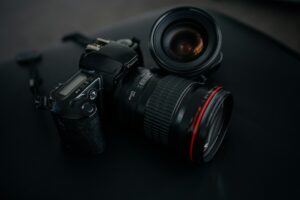Best Photography Lighting Setups for Portraits
Capturing the perfect portrait requires more than just a good camera and lens; the right lighting setup is crucial. Whether you’re an amateur photographer or a seasoned professional, understanding how to manipulate light can make all the difference in your portrait photography. In this guide, we’ll explore some of the best lighting setups for portraits that will help you achieve stunning results.
1. Natural Light
Natural light is often the most accessible and flattering light source for portrait photography. It creates soft, diffused light that is perfect for achieving a natural look. Here’s how you can make the most of it:
- Golden Hour: The golden hour, just after sunrise or before sunset, provides warm, soft light that is ideal for portraits. Position your subject with the sun behind them to create a beautiful backlit effect.
- Window Light: Shooting indoors? Position your subject near a large window. The light filtering through the window will create a soft, even illumination on your subject’s face. Use a reflector to bounce some of the light back onto the shadow side of the face for a balanced exposure.

2. The Classic Three-Point Lighting Setup
The three-point lighting setup is a fundamental technique in portrait photography, providing a well-balanced and professional look. It consists of:
- Key Light: The primary source of light, placed at a 45-degree angle from the subject. It should be the brightest light in your setup and is responsible for illuminating most of the subject.
- Fill Light: Placed opposite the key light, the fill light softens the shadows created by the key light. It’s typically less intense and helps to even out the light on the subject’s face.
- Back Light (Rim Light): Positioned behind the subject, this light adds depth and separates the subject from the background by creating a subtle outline or “rim” of light.
3. Rembrandt Lighting
Rembrandt lighting is named after the famous Dutch painter Rembrandt, who often used this technique in his portraits. It’s characterized by a small, triangular patch of light on the cheek of the subject, opposite the key light.
- Setup: Position the key light at a 45-degree angle to the subject, slightly higher than eye level. The fill light can be optional, depending on the level of contrast you desire.
- Effect: This setup creates a dramatic and moody atmosphere, ideal for portraits with a more serious or artistic tone.
4. Butterfly Lighting
Butterfly lighting, also known as Paramount lighting, is popular for glamour and beauty shots. It’s named for the butterfly-shaped shadow that appears under the nose when the light is positioned correctly.
- Setup: Place the key light directly in front of the subject, slightly above their head, aiming down towards their face. This setup creates soft shadows under the cheeks and nose, accentuating the facial features.
- Effect: This lighting is perfect for highlighting cheekbones and creating a flattering, symmetrical appearance.
5. Split Lighting
Split lighting is an edgy, dramatic setup that divides the subject’s face into two distinct halves—one light and one shadow.
- Setup: Position the key light at a 90-degree angle to the subject, directly to the side of their face. This light should only illuminate half of the face, leaving the other half in shadow.
- Effect: Split lighting is often used in portrait photography to create a powerful, intense look. It’s especially effective in black-and-white portraits.

6. Clamshell Lighting
Clamshell lighting is a go-to for beauty and fashion photography. It’s a variation of butterfly lighting but with an additional light or reflector to fill in shadows.
- Setup: Position the key light directly in front of the subject, slightly above eye level. Place a reflector or another light below the subject’s face, angled upwards to eliminate shadows under the nose and chin.
- Effect: The result is a soft, even light that beautifully highlights the subject’s face, making it ideal for close-up portraits.
Conclusion
Mastering different lighting setups is essential for any portrait photographer looking to elevate their work. Whether you prefer the soft, natural look of window light or the dramatic shadows of Rembrandt lighting, each setup offers unique possibilities for creative expression. Experiment with these techniques to find the one that best suits your style and the mood you want to convey in your portraits.